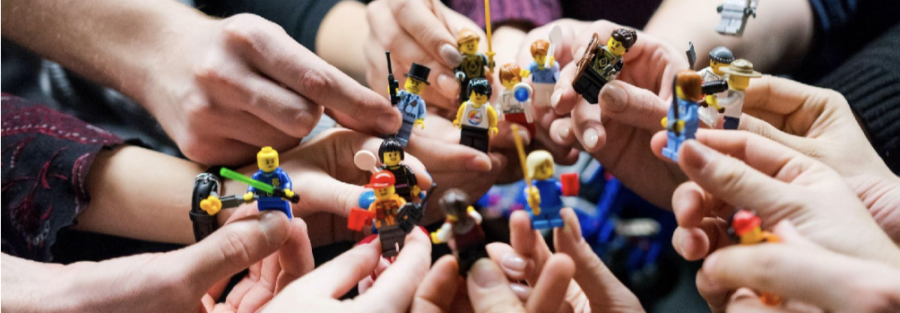Not Just A Boss: Achieve Success With Strong Employee Relationships
The once mundane corporate routine, relationships and lifestyles that employers and employees stuck to for decades had been shaken up overnight by the pandemic. Suddenly, worker-employer relationships were strained from remote working and businesses were scrutinised for the support they provided for their employees’ well-being. The shifts and changes that would have usually taken years to unfold were crammed into just a few months.
With the abrupt changes, leaders and managers have had a hard time adjusting to the new expectations and mindsets of their employees. However, to maintain a smooth-running organisation despite the shake-ups, leaders have to learn to adapt and reconsider old habits.
It is proven that an organisation’s success is directly tied to the relationship it has with its employees. Leaders who want to maximise the potential of their workforce and succeed in unpredictable times should recognise the various ways they can engage with their employees to create high-performing teams.
Here are a few key elements you’ll have to consider to reach optimal performance in your team.
The Human Deal
A study by the research and advisory firm, Gartner, which included global polls of 5,000 employees and more than 150 HR leaders revealed that Employee engagement has been stagnant since 2016. For example, only 31% of employees believe their organisation provides something distinctive. Only 23% of HR executives expect employees to stay with the company after the pandemic.
So what are organisations lacking? There’s a common misconception that a company is worth staying on if it delivers competitive perks. Contrary to popular belief, engagement and retention do not depend on benefits and rewards.
Ever since the pandemic, employees’ mindsets have shifted. Employees are no longer looking for material offerings but are more concerned about the depth of their contributions such as if they are achieving their purpose or if they are content with their jobs.
According to Carolina Valencia, Vice President of Gartner’s HR group and one of the study’s authors, “Companies have been engaged in an arms race to offer the best perks, but once basic needs are met, people are more powerfully motivated by feelings than by material features. Employees today want to be treated as people, not just workers.”
As times change, organisations also need to improve their learning and development. In a survey performed by Gartner in January 2021, 47% of employees said their stress levels were higher than they’d ever been in their jobs, and only 37% said their company understood what they needed in their personal lives.
Retention, personal excellence and high-performing teams begin by making employees feel cared for financially, physically and emotionally. Here’s what you can do to make the employees more than just workers.
Keep in touch with employees’ lives outside of work
Researchers argue that since the pandemic, the lines between work and personal lives have been blurred. Employees are no longer hesitant to talk about their lives outside of work. More than 60% of employees believe their employer must participate in the care of their families and communities.
Employees seek their managers to understand their personal obligations and be empathetic. These employee-employer relationships are created by building trust in the workplace so it is essential to create a psychologically safe environment where communication is prioritised.
INSIDER INFO: Building trust requires you to improve listening skills and communicate appropriately in different situations. Our Building Trust Workshop helps you learn the three key steps to trust building in teams — accept, enquire, act.
Assuring Independence
According to Gartner, adopting radical flexibility increases the number of high-performing teams by 40%. However, offering “radical flexibility,” in which employees may choose who they work with, what they work on, and how much they work can be a little too much to offer. It may not seem realistic in every job but non-white-collar workers should be given more choice over their schedules.
An example of radical flexibility is the pharmaceutical company Novartis, where each team determines the most effective work patterns and sets their own boundaries for flexible work.
Opportunities for Personal Development
“Learning something new, even when it’s not work-related, hones employees’ learning skills. It pays off for employers too.” says Valencia. Besides professional development, employees also want possibilities for personal development. Some examples can be learning a new language or a confidence workshop.
By broadening the concept of “development,” both performance and retention increase by 6%.
Instilling a sense of common purpose
Ever since the pandemic, people have grown more conscious about their purpose in life. Employees gain a sense of purpose when their contributions to an organisation are making a difference in the world. Purpose gives employees a sense of meaning and pushes them to their optimal performance.
Around 53% of employees say they want their leaders to take a stand on societal issues that matter to them, rather than just making token statements. However, many employees are still unaware that their employers do so.
Companies can start by holding frequent meetings to review new concerns, develop a framework to address them, and share the outcomes with the rest of the organisation in a transparent manner.
Providing holistic well-being options
With the rising concerns about employee’s mental health and increasing burnout, the need for holistic employee wellness programs has never been greater
Although most large corporations provide a variety of well-being programmes, few employees make use of them. That’s a tough nut to crack, but businesses can start by realising that people’s requirements differ from one another and evolve over time.
“Alone, we can do so little; together, we can do so much.” ~ Hellen Keller
The Social Ties
Being part of a company shouldn’t be all work and no play. Actually, ‘play’ and informal interactions between team members are key social connections that help to improve collaboration. This is also known as social capital – the benefits people get through their social connections. Socialising facilitates the flow of knowledge and information and inspires others to come up with fresh ideas. It also helps to reduce absenteeism and turnover and improves organisational performance.
Ever since the pandemic, remote working has changed the nature of social interactions for the worse. While online meetings have increased in frequency because of their easy accessibility, employees are more isolated than ever. People report feeling disconnected as the shift to remote work has drastically shrunk people’s networks.
Creating structures and policies that support social connections at work is critical to building workplaces that are engaging, innovative, creative, and inclusive. Successful organisations are ones that build supportive social links for both in-person and virtual employees.
Here’s how to get started.
Help bring people together
Leaders should take the initiative to encourage people to expand their networks. For instance, team leaders or managers can bring individuals from different departments together and set aside some time for virtual coffee or networking meetings.
Employees want to feel like they belong and can contribute to a work culture where social support is prioritised. Also, hybrid and remote employees are found to do better when their managers schedule regular one-on-one meetings with them.
Encourage and reward people who help others
Lending a helping hand to others is always a good deed but did you know it can also improve motivation and purpose in your employees? Research shows that employees who are rewarded for helping others are more likely to be satisfied with their job and where they work. They also report higher-quality social connections, which are crucial for high-performing teams and a well-functioning organisation.
You can enact this change in your organisation by not only rewarding employees on their performance but also recognising employees that support their peers. Managers too can receive encouragement and be rewarded for building team spirit.
Make meetings purposeful, sociable, and inclusive
The problem with online meetings is that people can feel left out and disconnected. It is usually easier to raise opinions in a physical meeting than in a remote setting. Ever since social distancing has eased and hybrid work models have been introduced, communicating with those not present in the meeting room has been an issue. Leaders and managers must ensure that all members are included in a meeting. Also, don’t miss out on the fun and social parts of the meeting such as catching up with each other at the end of a meeting or even playing a virtual game together.
The Psychological Safety Elements
The psychological safety of a workplace is determined by how comfortable employees are willing to adopt interpersonal risk-taking such as voicing their opinions in a meeting or even admitting mistakes. If there is poor psychological safety, employees may be hesitant to speak up in such situations as they don’t trust their leaders enough to respond supportively.
The key components of creating a psychologically safe environment are empathy and interdependence. When a team member makes a mistake, leaders shouldn’t shut them down but instead mentor them to do better. This builds trust between employee and employer while also creating a productive environment for professional development. When an entire organisation adopts these changes, social connections become stronger, leading to high-performing teams.
INSIDER INFO: High-performing teams are not afraid of asking for help and offering feedback. Our EQ for Team Excellence workshop builds a functional team with the foundations of trust, inclusivity and the ability to handle conflicts.
Designing a more Interdependent Structure
Bonding workshops and virtual catch-ups can only push connections so far. In the long run, organisations have to think of a more sustainable method to maintain strong relationships within a team. Leaders can start by re-establishing the team’s objective, developing a shared identity and making responsibilities and processes transparent. To ensure consistency of these goals, leaders should create opportunities for collaboration. Pair up team members to work together on certain projects so they can interact more through teamwork while also improving their professional development through shared ideas
The post-pandemic transition is the best opportunity to facilitate a more connected workforce. From helping employees out of their shells to developing social capital, leaders should be at the centre of making these changes in an organisation. Apart from psychological safety, a culture of empathy, fun and collaboration will help your organisation achieve more success.
References:
- https://deloitte.wsj.com/articles/rethinking-the-employer-employee-relationship-01628713534
- https://hbr.org/2021/03/what-a-year-of-wfh-has-done-to-our-relationships-at-work
- https://hbr.org/2021/06/employees-are-lonelier-than-ever-heres-how-employers-can-help
- https://hbr.org/2022/03/rethinking-your-approach-to-the-employee-experience
- Photo by Vlad Hilitanu on Unsplash



